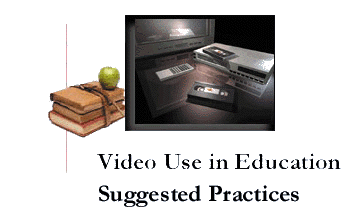
The process of using video for educational means is often thought of as obvious and easy to see. But if effective communication of information to the student is to be attained, the makeup and format of the video must take into account several factors, affecting concentration, distraction, and social learning involving television and video.
In an article in USA Today, Professor Katherine S. Cennamo, assistant professor of instructional development, Purdue University, and a former producer of instructional videos, outlines several tips for effective use of video in education and instruction. If this were an instructional video (zoom to close-up of a student walking across a campus) about desktop publishing and corporate newsletters (dissolve to chart that shows how many designers use Quark vs.PageMaker), it already would have been a miserable failure, maintains Professor. The unrelated images, distracting camera work, and complexity of the words and information all interfere with the message. Most viewers have lapsed into that comfortable--but inattentive--"couch potato" state of mind that takes over when they watch TV. "The couch-potato response may be appropriate for TV as entertainment, but we have to get the learner to play a more important, more active part when we're using video for instruction. We have to overcome the viewer's expectation that television is a passive cognitive activity," noted the professor in the article. She offers these suggestions for improving video instruction:
Source:
--USA Today (Magazine), Dec 1995 v124 n2607 p16(1).

